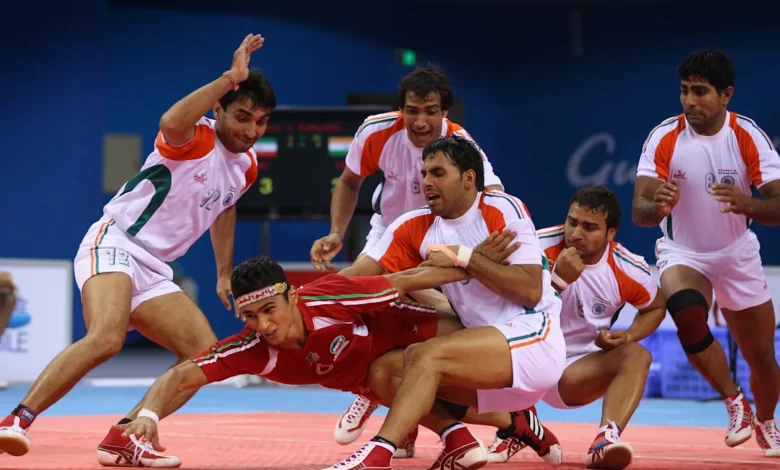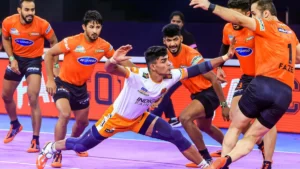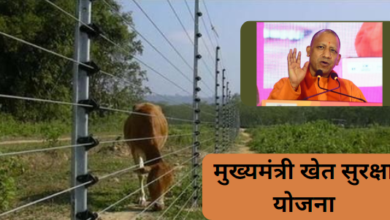Kabaddi Game History, Rules and Tournaments | Information About Kabaddi

Kabaddi is a popular sport in India and many other countries around the world. Though it may seem simple enough to understand, there are actually quite a few rules to this game. If you’re new to Kabaddi, or if you’re just looking to improve your understanding of the game, then read on!
This is such a game in which exercise is done along with the game and over time the level of this game has also increased a lot, first, it was played in the village then at the national, and international levels. Due to the wide spread of this sport, many young people are taking interest in this sport and making their career in it.
Nowadays, even though cricket is the rule in the sports world, but after the 2016 Kabaddi World Cup, everyone has come to know that there is no dearth of fans of Kabaddi. Kabaddi has become the fastest-growing game in new sports nowadays.
About Kabaddi
| game name | kabaddi |
| place of birth | India |
| players of one side in the court | 7 |
| play period | 40 minutes for men and 30 minutes for women |
| other names | hu tu tu and chedugudu |
| Women’s Kabaddi World Cup for the first time | 2012 |
| first international performance | 1936 (Berlin Olympics) |
| field size | For men – 121/2 m. X 10 m For women – 11 m. x 8 m |
| popular contest | Pro kabaddi |
| weight parameter | 85kg for senior men 75kg for senior women 70kg for junior men 65kg for junior girls |
| Establishment of India Kabaddi Federation | in the 1950s |
India has mastered Kabaddi from the very beginning and that is why perhaps India is also the champion.
History of Kabaddi game
The game originated in Tamil Nadu, India. This game is known by different names in different places like Hututu and Chedugudu etc. The sport of Kabaddi gained worldwide fame when the 1936 Olympic Games were held in Berlin. In 1938, it was included in the National Games in Kolkata.
After that All India Kabaddi Federation was formed in 1950 and the rules of the Kabaddi game were decided and this was reconstituted in the name of the Amateur Kabaddi Federation of India in 1972. Its first national tournament was played in Chennai in 1972.
Kabaddi got the most fame in Japan, this game was put in front of everyone in 1979 by an Indian named Sundar Ram and Sundar Ram had gone to Japan for this game on behalf of the Asian Federation of Amateur Kabaddi at that time.
There he, along with the people, promoted the game of Kabaddi for 2 months. Asia Championships was inaugurated for In which India won this tournament by defeating Bangladesh and other countries like Nepal, Malaysia and Japan were also involved in this tournament besides these two countries, this game was included in the Asian Games in 1990 and during this game was also played with matches between several other countries.

Top 10 Main Rules of Kabaddi
Rule 1: Two Teams of Seven Players
Rule 2: Each Match Consists of Two Halves
Rule 3: Points are Scored by Raiding the Opposition’s Side
Rule 4: A Successful Raid is Worth Two Points
Rule 5: A Player is Out if They are Caught During a Raid
Rule 6: A Player is Out if They Fail to Touch the Opposition
Rule 7: A Player is Out if They Cross the Center Line
Rule 8: A Player is Out if They Hold Their breath
Rule 9: A Player is Out if They Leave the Field of Play
Rule 10: The First Team to Score Seven Points Wins
Rules of Kabaddi game
Kabaddi game has different types of rules due to it being played in different ways, its basic rules are given below-
- This is a Highly Contact Sport in which the main task of a player is to go to the team of opposing players and touch them and come to his team and during this time he has to say Kabaddi Kabaddi while going to the opposing team.
- Each match is of 40 minutes and during this, the player ‘raids’ in the court of the opposing team and the player who raids is called ‘raider’. A raid begins as soon as a player enters his opponent’s team.
- The player of the opposing team handling the raider is called the defender. Opportunities for the defender to get out the raider are available according to the situation. The maximum time for any raid is 30 seconds. During the raid, the raider has to perform kabaddi ruts, which is called chant.
- There are two ways a raider can earn points once a raider has entered the defender’s court. In this, the first is the bonus point and the second is the touch point.
Points in Kabaddi
- Bonus Point: If the raider reaches the bonus line in the presence of six or more players on the defender’s court, the raider receives a bonus point.
- Touch Point: A touch point is awarded when the raider has successfully returned to his court by touching one or more defending players. These touchpoints are equal to the number of defenders touched. Players touched by the defender have been kicked off the court.
- Tackle Point: If one or more defenders force the raider to remain on the defending court for 30 seconds, the defending team receives a point instead.
- All Out: If all the players of a team are successful in getting all the players out of the field by getting their opponents completely out, then in return the winning team gets 2 extra bonus points.
- Empty Raid: If the raider comes back after crossing the box line without touching any defender or without touching the bonus line, it is considered an empty raid. No team gets a point during an empty raid.
- Do or Die Raid: If a team gets two empty raids in a row, the third raid is called a ‘do or die’ raid. The team must earn either a bonus or touchpoints during this raid. Failure to do so gives the defending team an extra point.
- Super Raid: A raid in which the raider scores three or more points is called a super raid. This can be a combination of a three-point bonus and a touch, or it can be just a touch point.
- Super Tackle: If the number of players in the defender team is reduced to three or less than three, and that team is able to handle and dismiss a raider, then it is called Super Tackle. The defender team also gets an extra point for a super tackle. This point cannot be used to revive the dismissed player.
Kabaddi Tournaments
- Asian Games
- kabaddi world cup
- Asia Kabaddi Cup
- Women’s Kabaddi
- Pro Kabbadi League
- UK Kabaddi Cup
- world kabaddi league

Essay On Kabaddi Game
The Kabaddi game played between two teams is counted among the ancient games. In terms of physical exercise and energy, it beats all other Indian outdoor games. The history of Kabaddi is very old, hundreds of years ago its form and way of playing was completely different from today’s game. Today Kabaddi is played from District level to the International level, in South India it is known as ‘Kai- PD’, which means to hold. Probably this is the origin of the word Kabaddi. In many parts of the country, it is known by different names, such as Chadukattu in Tamil Nadu, Haddu in Bangladesh, Bhavatik in Maldives, Kuddi in Punjab, Hu Tu Tu in Eastern India, Chedugudu in Andhra Pradesh.
What is a Kabaddi Playing Court like?
Kabaddi is a sport for which different types of grounds are prepared, separate for men and separate for women’s teams. Along with this, it is also seen whether the ground on which the game of Kabaddi is being played is flat and soft or not because from this the game is correctly estimated. For this, special care has to be taken of the size as well. A shape is drawn which is 12.50 m long and 10 m wide. On the other hand, for men and women of less than 50 kg weight, it is 11 meters in length and 8 meters in width. The entire playing area is divided into two halves. Which is called the central line in the common language and the middle line in the language of the sport. In this, special care is taken of the length and width of the playing field.
International kabaddi
In the international level teams of Kabaddi, there are 7 players in each team. The playing field is divided into equal parts into two teams. In Kabaddi played by men, the area of the field is (10 by 13), whereas in Kabaddi played by women, the area of the field is of (8 by 12). There are three additional players in both teams. The game is played at two 20-minute intervals, between which players have a five-minute half-time. During this half-time both parties change their court.

FAQ
1. 10 Rules of Kabaddi?
Answer: This is a Highly Contact Sport in which the main job of a player is to go to the team of opposing players and touch them and come to his team and during this time he has to say Kabaddi Kabaddi while going to the opposing team. Each match is of 40 minutes and during this, the player ‘ raids’ in the court of the opposing team and the player who raids is called ‘raider’. A raid begins as soon as a player enters his opponent’s team. The player of the opposing team handling the raider is called the defender. Opportunities for the defender to get out the raider are available according to the situation. The maximum time for any raid is 30 seconds. During the raid, the raider has to perform kabaddi ruts, which is called chant.
There are two ways a raider can earn points once a raider has entered the defender’s court. In this, the first is the bonus point and the second is the touch point.
2. When was Kabaddi born?
Answer: The game of Kabaddi originated in Tamil Nadu of ancient India and today’s game Kabaddi is a modified form of this. There is no proven time to start it.
4. Who played Kabaddi first?
Answer: India
5. How did Kabaddi start?
Answer: This game originated in Tamil Nadu, India. This game is known by different names in different places like Hututu and Chedugudu etc. The sport of Kabaddi gained worldwide fame when the 1936 Olympic Games were held in Berlin. In 1938, it was included in the National Games in Kolkata.






